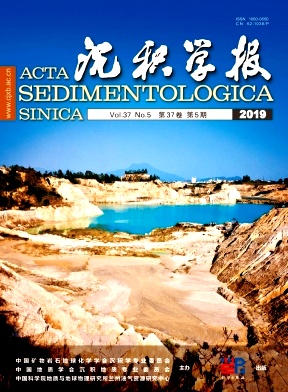Paleoenvironmental and Paleoclimatic Significance of Trace Elements in Ostracod Shells in the Upper-Middle Section,Upper Ganchaigou Formation,Western Qaidam Basin
doi: 10.14027/j.issn.1000-0550.2018.192
- Received Date: 2018-07-02
- Rev Recd Date: 2018-11-19
- Publish Date: 2019-10-10
-
Key words:
- Qaidam Basin /
- Upper Ganchaigou Formation /
- ostracods /
- trace elements /
- paleoenvironment
Abstract: Trace elements in ostracod shells in sedimentary deposits have important significance for studies of the paleoclimate and paleoenvironment. Variation in trace element content in ostracod shells combined with the characteristics of the ecological environment of ostracod fossil assemblages yielded more details about the paleoenvironmental and paleoclimatic evolution during the middle-upper section of Upper Ganchaigou Formation in the western Qaidam Basin. The trace element ratios Sr/Ca,Ba/Ca and U/Ca,and the trace amounts of Sr,Ba and U in the ostracod shells were low in phase A (28.35-22.33 Ma);their values were high in phase B (26.42-23.08 Ma),declining at the end of this phase. In phase C (23.08 22.33 Ma)they increased significantly,although the Mn/Ca ratio and Mn content showed approximately the opposite change. The average values of Sr/Ca and Sr (respectively 0.002 278 and 37.76×10-9)were low in phase A and higher in phase B (respectively 0.003 347 and 41.46×10-9),and their average values were also higher in phase C (respectively 0.003 346 and 56.06×10-9). The average values of Ba/Ca,U/Ca,Ba and U changed similarly,whereas the average values for Mn/Ca and Mn showed opposite changes. The ostracod shell assemblages also differed in the corresponding phases. Combining these trace element variations in the ostracod shell fossils and their assemblages with synchronous deep-sea oxygen isotopes,and noting previous research results,the evolution of the paleoenvironment and paleoclimate in the middle-upper section of Upper Ganchaigou Formation was determined to be the following. In phase A,the ancient lake of the western Qaidam Basin was a deep,low-salinity,strongly reducing lake environment with high water level;the climate was relatively warm and moist. In phase B,the lake was shallow,with high salinity,strongly oxidizing and low water level,and the overall climate was hot and arid. At the end of phase B,the salinity and oxidizing properties of the lake water decreased as the water level rose,and the climate became less arid. In phase C,the salinity and oxidation of the lake water increased as the water level fell, and the climate became cold and arid,similar to the inland aridity of northwestern China in the early Miocene. The paleoclimate during this geological period was mainly influenced by global climate evolution and uplift of the Tibetan Plateau, and also the retreat of the Paratethys Sea to the west.
| Citation: | CHEN Wei, LI Xuan, ZENG Liang, WANG QingTong, JIAO XueYao, YANG Ping, JIANG XiaoQing, MA JinLong. Paleoenvironmental and Paleoclimatic Significance of Trace Elements in Ostracod Shells in the Upper-Middle Section,Upper Ganchaigou Formation,Western Qaidam Basin[J]. Acta Sedimentologica Sinica, 2019, 37(5): 992-1005. doi: 10.14027/j.issn.1000-0550.2018.192 |






 DownLoad:
DownLoad: